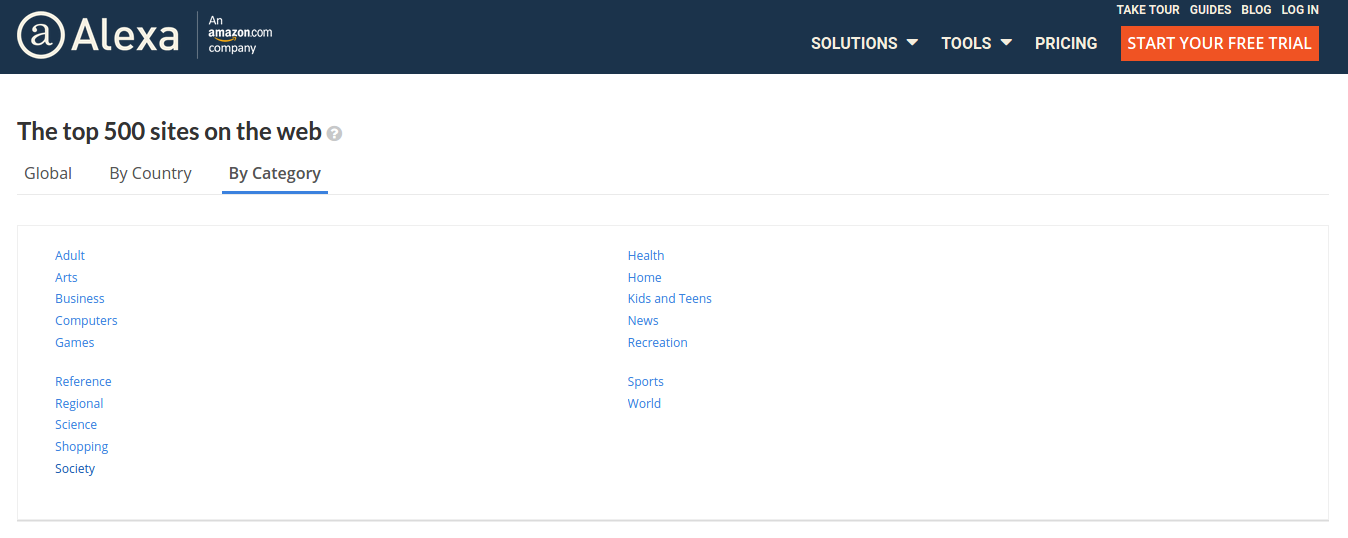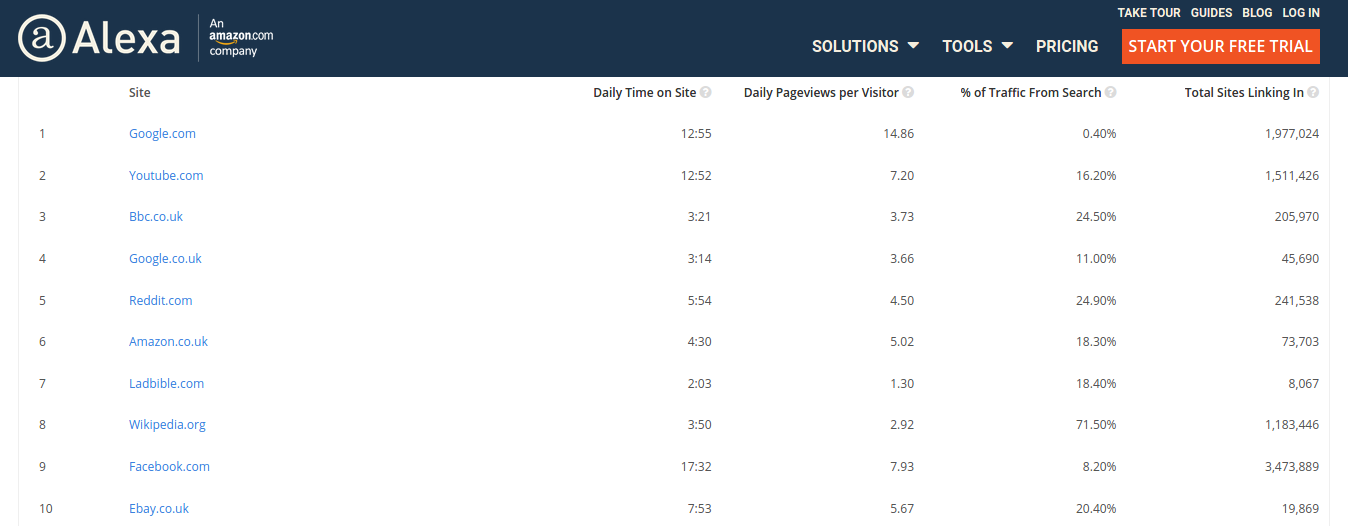Social networking websites have been gaining momentum for years now. They have been the most popular websites in general for quite some time now.
How do we know this? Simple, we take a look at some interesting statistics. If you want to see it for yourself, here’s an interesting exercise for you:
Step #1
Click over to Alexa.com (For the uninitiated, Alexa is the web’s top tool for traffic stats on just about every single website out there)

Step #2
Click on Top sites in the Tools category to bring up a list of the most visited sites on the web. Then click sort ‘by category’ which gives the rankings per different type of website.
Step #3
Notice anything missing from the list of categories? (Clue: it’s something obvious and yet something which doesn’t seem like it’d fit neatly into any of the single categories offered by Alexa)

I asked a few friends to do this exercise and eventually most of them reached the same answer – the obvious ‘missing’ category was ‘Social Networks’. How come Alexa, which monitors everything from Google’s traffic stats right through to the smallest little hobby blog doesn’t have a category for social networks?
The answer is actually fairly simple and provides a telling insight into the maturation of web 2.0: social is no longer a ‘type of website’ among many other different types (which perhaps was the case in the mid 2000’s for example).
From being a type of website a few years ago, social is now the ‘type of web’ that we have.
In other words, web 2.0 – characterized by bilateral information flows (user driven content and exchange in the broadest sense of the term) – has matured to the extent that we can no longer demarcate which sites have this defining feature and which do not. Social, in some sense of the term, is everywhere.
A follow up exercise:
1. Go back to Alexa.com and click the top sites again – but this time sort by country (selecting your own country will make the exercise easier).
2. Look at the top 25 most visited sites for your country. How many do not have any sort of integral social element at all?

For the UK, I counted only 1 or 2 which really didn’t entail any sort of social element: Microsoft Online and the government website.
Of the other 25 most visited sites, 23 had a significant social element, regardless of which category the site would fall into within Alexa’s rankings.
Take news websites for instance. In the UK rankings there are a number of high entries including the Guardian, the Daily Mail and BBC.co.uk (which also encompasses services like the iPlayer along with the news, weather, and sport components). All three of these news websites encourage users to register and get involved with commenting on content, as well as sometimes participating in live web-chats which become content.
Let’s try another category – reference. Here, Wikipedia is a key entry not just in the UK but almost everywhere else. Arguably most users of Wikipedia who want to check an article are not encountering any sort of social element – until we remember that the very basis of Wikipedia’s existence is the harnessing of a social dynamic behind-the-scenes, which draws on collaboratively-created user content for the whole thing to exist in the first place.
Now I’m not suggesting that we should think of Wikipedia or BBC News as social networks – clearly this would misrepresent their primary function and appeal. Nonetheless, the key point is that even these two pillars of online news and online reference have integrated the social potential of web 2.0 as a core aspect of what they do. In other words, news is now also social. Reference is also social. Entertainment, shopping, sports – you can choose any of Alexa’s categories – are all now social in some way.
Of course social is nothing new in 2020 – but the sheer extent of its infiltration of every aspect of the web is only now becoming evident (as we always knew it eventually would).
The simple conclusion is that understanding social networks and the social principles that define web 2.0 is key for any sort of website – not just the ones whose primary functionality can be characterized as being a social network. Social has been the theoretical premise of web 2.0 for almost a decade now – but it is only now becoming an evident reality absolutely everywhere you look.



